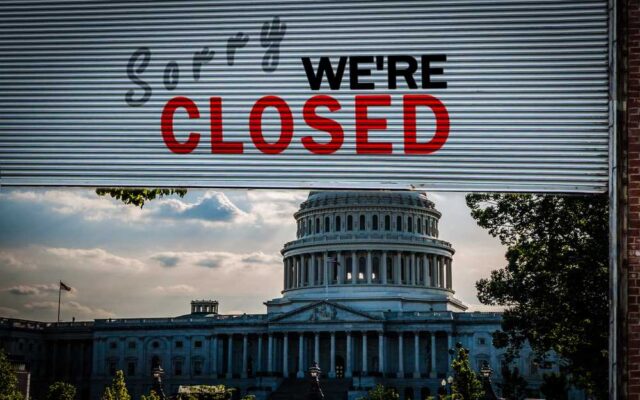TL;DR
- The Senate’s crypto market structure bill, a companion to the House-passed Digital Asset Market Clarity Act of 2025 (H.R. 3633), remains stuck as a record government shutdown freezes committee work.
- Paul Atkins, confirmed as SEC Chair in April 2025, has shifted the agency toward an innovation-first, cooperative stance on digital assets.
- Regulatory thaw meets legislative freeze — delaying U.S. crypto reform well into 2026.
The United States was closer than ever to defining a legal framework for digital assets. The House had passed the Digital Asset Market Clarity Act, the SEC had softened its stance under new leadership, and bipartisan momentum seemed real. Then the government shut down. And, Washington’s long-awaited crypto breakthrough froze in place.
The irony of progress lost
Washington is experiencing a strange split. The Senate’s crypto market structure bill, the chamber’s version of the Digital Asset Market Clarity Act, was meant to deliver the first comprehensive digital-asset regulation framework. Yet, it has ground to a halt amid the longest government shutdown in U.S. history. Hearings are canceled and markups delayed. Even bipartisan negotiators admit that nothing meaningful will move until Congress reopens for business.
At the same time, the SEC crypto regulation landscape is softening. Paul Atkins was confirmed and sworn in as SEC Chair in April 2025. Since then, the agency has moved away from high-profile enforcement actions and begun drafting a more industry-friendly digital-asset framework. Regulators are signaling cooperation, just as lawmakers lose the capacity to legislate.
A thaw inside the SEC
Atkins has become the face of a major shift in tone. After years of adversarial oversight, the SEC now speaks about “clarity, not crackdown.” The agency even dismissed several enforcement cases involving Coinbase and Uniswap, began pilot programs for compliant token offerings, and opened consultations for decentralized-finance sandboxes.
The chair’s message is pragmatic: innovation and investor protection can coexist. The SEC digital-asset framework under his leadership proposes clear rules of the road without criminalizing experimentation. In short, the regulator once blamed for blocking progress is now urging Congress to catch up.
Where the Senate got stuck
The optimism inside the agency, however, contrasts sharply with paralysis on Capitol Hill. The crypto market structure bill, modeled on the House’s Clarity Act, remains trapped in committee revisions.
Lawmakers are divided on who should oversee most tokens: the CFTC or the SEC. That turf battle remains a core issue. Senators also disagree on the stablecoin interest clause, a leftover from the summer’s stablecoin statute that restricts yield-bearing tokens. Editing that single paragraph has stalled the entire markup process.
Even routine work has frozen. Staff briefings were postponed when the shutdown extended beyond 30 days, and procedural deadlines keep slipping. The result is a Senate crypto bill delay that could push reform well into 2026.
The missed window
For once, Washington’s mood had aligned with market expectations. A pro-innovation SEC Chair confirmed by the Senate, moderate voices in both parties, and a House-approved framework offered a rare opening for balanced reform. Yet procedural politics closed that window before a single Senate vote could be cast.
Industry executives who lobbied for clarity now face more limbo. The crypto legislation delay sustains uncertainty around custody, listing standards, and disclosure duties. Even as crypto regulation edges toward modernization at the U.S. agency level, Congress sadly remains the choke point.
>>> Read more: US Stablecoin Law 2025: Key Changes for Compliance and DeFi
What comes next
Once the shutdown ends, committees will need weeks to rebuild calendars and re-negotiate draft language. Realistically, the next window for progress is early 2026. Until then, the SEC plans to advance limited rule-making under existing authority, continuing the pilot programs that Atkins considers a bridge to full legislation.
For investors and builders, that means adapting to a half-reformed environment: a cooperative regulator without a completed statute. How the government shutdown affects crypto legislation may be temporary, but the cost of lost momentum could linger for years. Unless Congress revives and advances the Senate crypto bill, the United States will head into 2026 with a friendlier SEC but no unifying law; a thawed regulator facing a frozen legislature.
Readers’ frequently asked questions
What is the Digital Asset Market Clarity Act of 2025 (H.R. 3633)?
It is the House-passed framework for digital-asset oversight. The Senate’s companion crypto market structure bill aims to align regulatory authority between the SEC and CFTC and to define which assets are treated as digital commodities or securities.
What happens to the Clarity Act while the Senate is stalled?
The bill remains in committee until Congress reconvenes. During the government shutdown, no markups or votes can occur, so the Senate version cannot advance to the floor. After the shutdown, lawmakers must resume markup or reintroduce the text for it to progress.
How does the SEC’s new stance under Paul Atkins affect the Clarity Act’s goals?
It lowers enforcement pressure and supports innovation via limited rulemakings and pilot programs, but it does not replace legislation. Statutory clarity still depends on Congress passing the crypto market structure bill in both chambers, which would formalize roles for the SEC and CFTC.
What Is In It for You? Action items you might want to consider
Track post-shutdown hearings
Once Congress reconvenes, monitor the Senate Banking and Agriculture Committees for updates on the Senate crypto bill. Early scheduling notices will indicate whether the Clarity Act companion is being revived or rewritten.
Watch SEC pilot initiatives
The Paul Atkins SEC is advancing limited digital-asset pilot programs that could preview future compliance standards. Businesses can use these to anticipate what full legislation may require later.
Review jurisdiction exposure
Exchanges and custodians operating in multiple markets should reassess how overlapping CFTC vs SEC oversight could affect reporting, listing, or custody obligations once the crypto market structure bill eventually passes.











[…] >>> Read more: Crypto Market Structure Bill Stalls in Senate […]